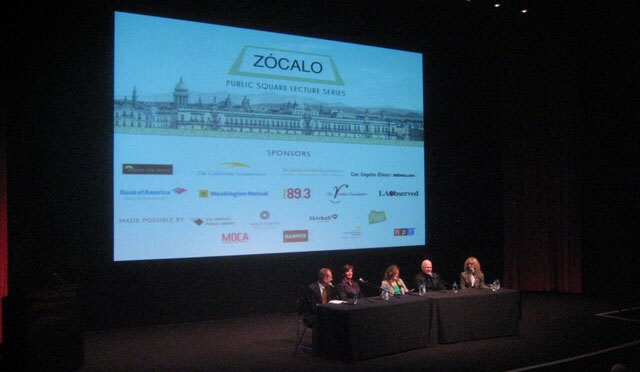Truth matters. Community matters. Your support makes both possible. LAist is one of the few places where news remains independent and free from political and corporate influence. Stand up for truth and for LAist. Make your tax-deductible donation now.
This is an archival story that predates current editorial management.
This archival content was written, edited, and published prior to LAist's acquisition by its current owner, Southern California Public Radio ("SCPR"). Content, such as language choice and subject matter, in archival articles therefore may not align with SCPR's current editorial standards. To learn more about those standards and why we make this distinction, please click here.
The Health of Pornography in Los Angeles, Part 1: The Economy & Morality of Hollywood

It is estimated that 200 firms, 6000 workers and 1200 actors produce 4000-7000 adult films a year in Los Angeles. Yes, there are more porn-related, adult industry jobs than software jobs in this town. With $4.3 billion in sales and rentals (which is still nothing compared to the $12 Billion made from toys and books), the Adult Entertainment Industry puts $4 billion in revenue back into the local economy.
“It’s in an industry producing a product and it takes a lot of people to get it on the shelves or wherever people buy it,” explained Jack Kyser of the Los Angeles County Economic Development Corporation (LAEDC) at last night's Zócalo public forum on the porn industry at the Hammer Museum. Often referred to as the "guru of the Los Angeles economy," Kyser explained that for every direct worker in the industry, there is one other person in the county that it employs indirectly (think plastic DVD case makers or delivery trucks).
Despite economic challenges that other Hollywood industries have been experiencing, such as piracy, the internet and amateur entertainment, porn is not hurting as badly. “I would take our situation over [the recording industry's] any day of the week," porn producer, industry observer and former actor Ira Levine added. “Our consumers sort of realize there is some connection for their paying for our products and our ability to make them.” Basically, the porn industry is here to stay.
Though, over the last 10 years, there has been a paradigm shift in the industry. Whereas former actors and last night's panelists Nina Hartley (600 films) and Sharon Mitchell (2000 films) made careers out of porn spanning up to 25 years, the current standard is 6 months to 3 years with 300-500 people entering the business every single month.
"The porn industry is highly paid blue-collar labor," Hartley explained as she delved into the myth-busting fact that not all porn stars are millionaires. The average full time actor or industry worker makes about $60,000 a year, and that does not include retirement, benefits and residuals. In fact, back in 1972 when The New Yorker was writing Adult Movie reviews, the industry approached SAG to join. No doubt, SAG said no.
When asked by moderator Mariel Garza of the Los Angeles Daily News about why the industry doesn't just unionize itself, Hartley said you can't build a union on a transient industry. Disagreeing with that assertion, audience member Paula Tavrow, Ph.D., Director of the Bixby Program at the UCLA School of Public Heath said later at the event's cocktail hour that "if the industry goes union, maybe it won't be so transient."
One contentious matter to Hartley is the contradiction mainstream Hollywood plays and spins. The industry can't join SAG, yet during network TV "sweeps" in the fall and spring, the phones start to ring for adult actors to make appearances.
When Hartley was in Boogie Nights at the request of the director who was a "big fan" of hers, she was never publicized nor asked to attend press junkets. While morality may play into these decisions, the contradictions are still rampant. Porn is used as a test market for technologies (internet streaming, DVDs), but after that, it's given a hard time. One example brought up: does Sony want the industry using their Blue-Ray technology?
Exasperated, yet with command, she yelled, "They will use sex to sell anything, but won't sell sex for sex."







